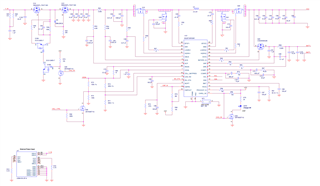Other Parts Discussed in Thread: BQ25792
Hi,
I am considering using the BQ25730 charge controller for a design which will utilize a single cell (1S) or dual cell (2S) li-ion battery pack (8000-12000 mAhr) cell.
This device was selected because it has a number of advantages to delivering a flexible solution for high current charging and NVDC architecture.
The charger circuit must be able to negotiate USB-C Power Delivery up to 20V/3A in order to rapidly recharge the battery.
The system load is 15W nominal, 20W peak (<500 mS) and the power-path must be able to keep the running without interruption while initiating charging profiles.
The battery is fed through to a boost converter power supply (12W) for driving a load and a LDO (3W) for powering low-voltage electronics. The maximum input voltage to the boost converter is 13V and the LDO is 18V.
I have created a design based on the EVAL board schematic (*FYI the USB-C port is not configured correctly*).
Questions:
- Based on this application is the BQ25730 the most ideal choice with minimal component count/cost? There are quite a few components required and would prefer something with less parts.
- What additional hardware is required to negotiate USB PD profiles for the UFP with the DFP?
- How is the output voltage configured with NVDC such that the output is the same voltage as the battery even while charging with up to 20V input?
- Is there any reference design which might be helpful at illustrating this functionality?
- Please check design below for any errors/recommendations.
- The EN_OTG signal is not needed because the device is not ever acting as a host.
- I am not certain CMP_IN is required/needed. Can someone clarify the functionality of this pin?
- Are there any additional parts which an be removed that were carried forward from the EVM?
- Any other design / layout considerations?
Any guidance is extremely helpful. Thanks in advance!


